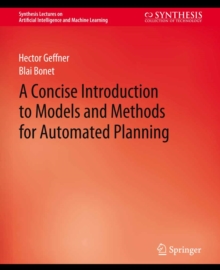
Introduction to Logic Programming PDF
by Michael Genesereth, Vinay K. Chaudhri
Part of the Synthesis Lectures on Artificial Intelligence and Machine Learning series
Description
Logic Programming is a style of programming in which programs take the form of sets of sentences in the language of Symbolic Logic.
Over the years, there has been growing interest in Logic Programming due to applications in deductive databases, automated worksheets, Enterprise Management (business rules), Computational Law, and General Game Playing.
This book introduces Logic Programming theory, current technology, and popular applications.
In this volume, we take an innovative, model-theoretic approach to logic programming.
We begin with the fundamental notion of datasets, i.e., sets of ground atoms.
Given this fundamental notion, we introduce views, i.e., virtual relations; and we define classical logic programs as sets of view definitions, written using traditional Prolog-like notation but with semantics given in terms of datasets rather than implementation.
We then introduce actions, i.e., additions and deletions of ground atoms; and we define dynamic logic programs as sets of action definitions.
In addition to the printed book, there is an online version of the text with an interpreter and a compiler for the language used in the text and an integrated development environment for use in developing and deploying practical logic programs.
Information
-
Download - Immediately Available
- Format:PDF
- Publisher:Springer International Publishing
- Publication Date:01/06/2022
- Category:
- ISBN:9783031015861
Other Formats
- Paperback / softback from £49.15
Information
-
Download - Immediately Available
- Format:PDF
- Publisher:Springer International Publishing
- Publication Date:01/06/2022
- Category:
- ISBN:9783031015861










